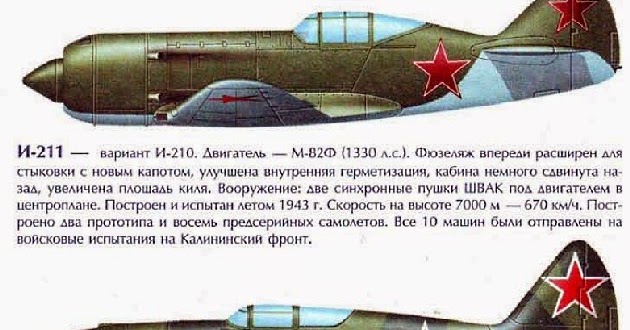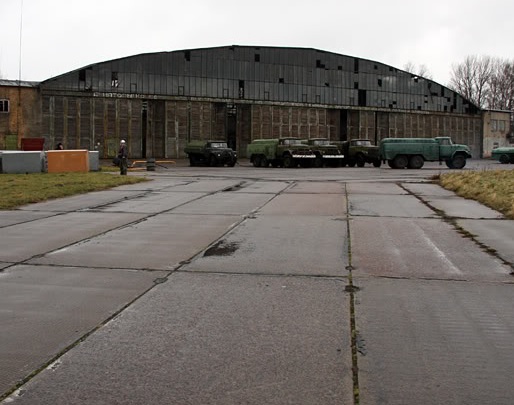British Turbojets
Following the failure of the Soviet Lyulka VRD-3, TR-1 and TR-1A turbojets and the difficulties encountered by the Soviet industry in obtaining reverse-engineered copies of German turbojets, on June 17, 1946, the Council of People’s Commissars ordered the purchase of ten Rolls-Royce
Nene Mk.I and ten Rolls-Royce
Derwent V British turbojets.
In the middle of July 1946, the Soviet Union placed an order for these engines together with:
-Practical assistance.
-Training of Soviets engineers in jet engine assembly, operation, maintenance, and repair.
-Manufacturing licences, including high-grade, high-temperatures metallurgic process of Nimonic 75-80 alloys used to make turbine blades and discs.
The engines were delivered between March and July 1947 and the USSR ordered a second batch of twenty
Derwents, ten
Nene Mk.I and five
Nene Mk.II to be delivered in November.
A third batch of four
Derwents and twenty
Nenes were ordered at the end of year.
The British government did not granted manufacturing licenses but Klimov GAZ 116 started the mass production of unlicensed copies under the codenames RD-45 (
Nene Mk.I with 2,230 kg thrust), RD-45F (
Nene Mk.II with 2,270 kg thrust) and RD-500 (
Derwent V with 1,590 kg thrust).
On March 11, 1947, the Council of People’s Commissars ordered to Lavochkin, Yak and MiG bureaus the development of two new fighters powered by British turbojets: one general-purpose tactical fighter with 950 km/h top speed and
Derwent engine and one high-altitude Mach 0.9 interceptor with
Nene turbojet.
Each OKB proposed two versions of each model: one with straight wings and pod-and-boom configuration and another with swept wings and "flying stovepipe" configuration.
March 11, 1947, tactical fighter development:
In an attempt to improve the performance of the La-156, a thin wing version was built with a thickness ratio of only 6 per cent and 200 kg less weight.
The new prototype, named La-174 TK, was flown in January 1948, reaching 603 mph (970 km/h).
Lavochkin La-174 TK technical data
Power plant: one Roll-Royce
Derwent V turbojet rated at 1,590 kg static thrust, wingspan: 28.3 ft. (8.64 m), length: 30.9 ft. (9.41 m), height: 12 ft. (3.7 m), wing surface: 145.53 sq. ft. (13.52 sq. m), take-off weight: 7,308 lb. (3,315 kg), maximum speed: 603 mph (970 km/h), service ceiling: 44,280 ft. (13,500 m), armament: three nose mounted 23 mm Nudelman-Suranov NS-23 cannon.
Late in 1947 a production MiG-9 was modified replacing the two RD-20 turbojets with one
Nene Mk.I.
To accommodate the new centrifugal engine of 1,257 mm of diameter it was necessary to redesign the fuselage but the project, named I-320/FN (a project without any connection with the I-320 R-1 night fighter) was cancelled in favor of the new I-310 S swept wing prototype.
MiG I-320/FN technical data
Power plant: one Rolls-Royce
Nene Mk.I turbojet rated at 2,230 kg static thrust, wingspan: 32.8 ft. (10 m), length: 35.7 ft. (10.88 m), height: 10.76 ft. (3.23 m), wing surface: 202.2 sq. ft. (18.20 sq. m).
The Yak-23 was a follow-on of the Yak-15, with
redan configuration and tricycle undercarriage, powered by one nose mounted
Derwent V turbojet.
The prototype was flown on July 8, 1947, reaching 575 mph (925 km/h).
The Yak-23 was built, as a tactical fighter, on a series of 316 machines between 1948 and 1951.
Yak-23 technical data
Power plant: one Rolls-Royce
Derwent V centrifugal turbojet rated at 1,590 kg static thrust, wingspan: 28.6 ft. (8.73 m), length: 26.7 ft. (8.13 m), height: 10.8 ft. (3.31 m), wing surface: 145 sq. ft. (13.5 sq. m), take-off weight: 7,460 lb. (3,384 kg), maximum speed: 575 mph (925 km/h), service ceiling: 48,600 ft. (14,800 m), armament: two nose mounted 23 mm NR-23 cannon, equipment: ejector seat.
The Yak-25 was an improved variant of the Yak-19, with "flying stovepipe" configuration, 9% thickness straight wing and 45-degree swept back tail surfaces, powered by one
Derwent V turbojet.
The prototype was flown on October 31, 1947, reaching 610 mph (982 km/h) but the project was discontinued on July 1948 due to extremely severe tail buffeting.
Yak-25 technical data
Power plant: one Rolls-Royce
Derwent V centrifugal turbojet rated at 1,590 kg static thrust, wingspan: 29.1 ft. (8.88 m), length: 28.3 ft. (8.65 m), height: 11.87 ft. (3.62 m), wing surface: 150 sq. ft. (14 sq. m), take-off weight: 7,022 lb. (3,185 kg), maximum speed: 610 mph (982 km/h), service ceiling: 46,000 ft. (14,000 m), armament: two nose mounted 23 mm NR-23 cannon, equipment: ejector seat.
March 11, 1947, high-altitude interceptor development:
When it became apparent that the reheated Lyulka TR-2 with 2,500 kg thrust was not going to be available, the MiG I-305/FL was completely redesigned to reduce the weight to a maximum of 4,500 kg.
To meet the March 11, 1947, specification the airplane received the project designation I-310 S.
The I-310 S initial project was expected to be powered by an RD-10F, but as British centrifugal turbojets became available, it was necessary to redesign the fuselage with a diameter of 1,512 mm.
Having the excess power generated by the new British turbojets, the Soviet designers were able to abandon the pod-and-boom system and build lighter fuselages with the same tubular structure of the Junkers Ju 248, already tested on the MiG I-270.
The MiG I-310 S had mid-mounted wings with 35-degree swept (25% chord), 2-degree anhedral, fitted with fences to delay the migration of the pressure center at high speed, 55.7-degree swept tailfin, 40-degree swept mid-high tail plane and nose mounted bubble canopy.
The prototype I-310 S-01 was flown on December 30, 1947, powered by one Rolls-Royce
Nene Mk.I and was cleared for mass production, under the designation MiG-15, at State Aircraft Factory I.
MiG I-310 S-01 technical data
Power plant: one Roll-Royce
Nene Mk.I centrifugal turbojet rated at 2,230 kg static thrust, wingspan: 33 ft. (10.08 m), length: 33.1 ft. (10.10 m), height: 12 ft. (3.7 m), wing surface: 228.8 sq. ft. (20.6 sq. m), take-off weight: 10,640 lb. (4,820 kg), maximum speed: 648 mph (1.042 km/h), service ceiling: 49,856 ft. (15,200 m), armament: two nose mounted 23 mm Nudelman-Suranov NS-23 cannon and one 37 mm N-37 cannon.
The Lavochkin La-168 prototype flew on April 22, 1948, reaching 1,084 km/h-Mach 0.914.
The new plane was fitted with 37-degree swept wings, 45-degree T-tail plane and fuselage mounted landing gear.
The La-168 was a better performing aircraft than the I-310S but its narrow track landing gear was not considered suitable for rough-field operations.
Lavochkin La-168 technical data
Power plant: one Roll-Royce
Nene Mk.I centrifugal turbojet rated at 2,230 kg static thrust, wingspan: 31.2 ft. (9.5 m), length: 34.6 ft. (10.56 m), height: 11.47 ft. (3.5 m), wing surface: 194.6 sq. ft. (18.08 sq. m), take-off weight: 10,097 lb. (4,580 kg), maximum speed: 674 mph (1.084 km/h-Mach 0.914), service ceiling: 42,650 ft. (13,000 m), armament: two nose mounted 23 mm Nudelman-Suranov NS-23 cannon and one 37 mm N-37 cannon.
The Yakovlev response to the March 11, 1947, requirement was the Yak-30, an advanced version of the Yak-25 with 35-degree swept wings and 35-degree tailplane.
The prototype was flown on September 4, 1948, reaching 659 mph (1,060 km/h) powered by one
Derwent V turbojet.
Factory testing concluded on December 16, 1948.
Yak-30 technical data
Power plant: one Roll-Royce
Derwent V centrifugal turbojet rated at 1,590 kg static thrust, wingspan: 28.4 ft. (8.65 m), length: 29 ft. (8.86 m), height: 11.55 ft. (3.52 m), wing surface: 161.5 sq. ft. (15 sq. m), take-off weight: 7,286 lb. (3,305 kg), maximum speed: 659 mph (1.060 km/h), service ceiling: 49,200 ft. (15,000 m), armament: two nose mounted 23 mm Nudelman-Suranov NS-23 cannon and one 37 mm N-37 cannon.


